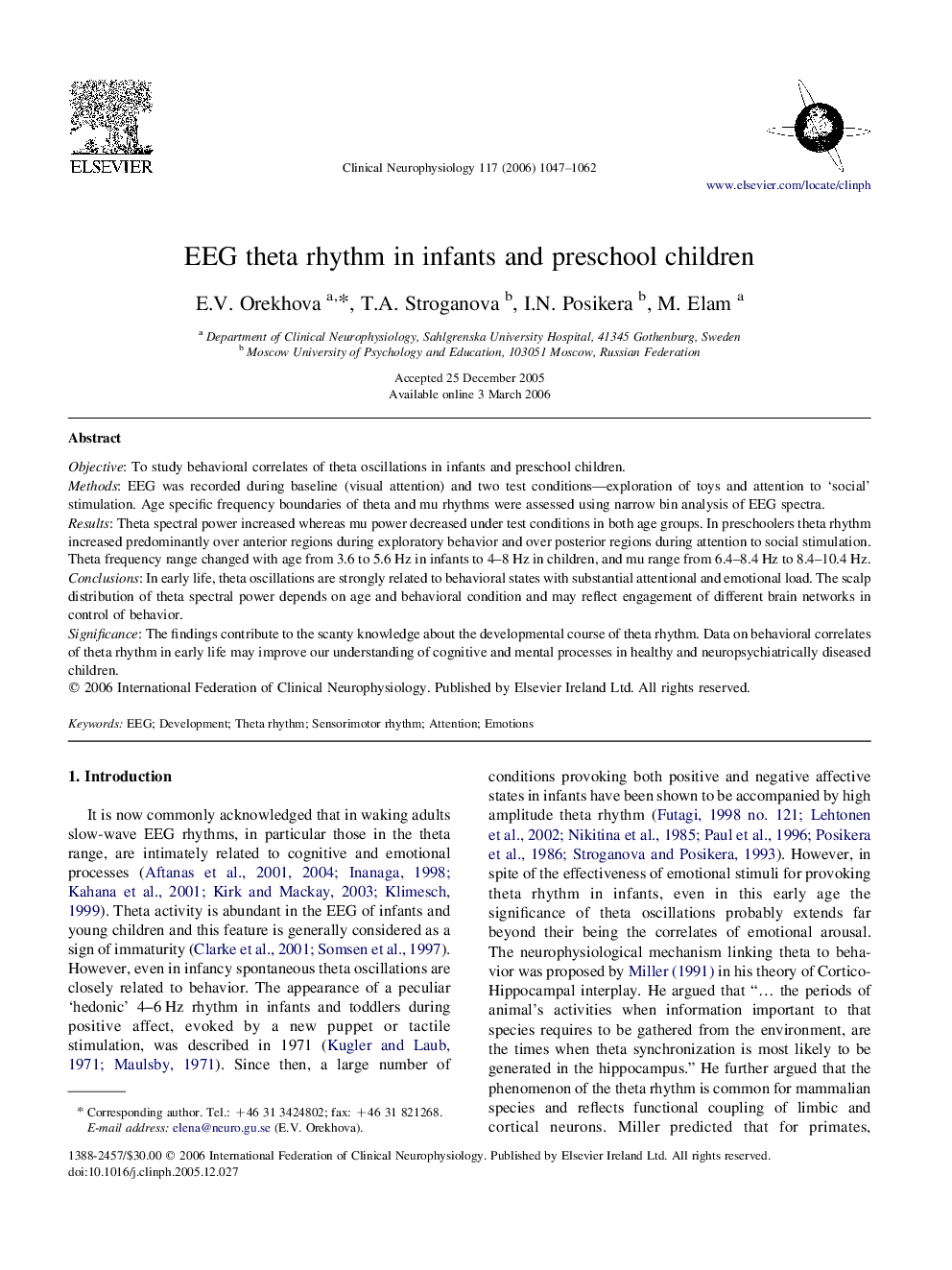| Article ID | Journal | Published Year | Pages | File Type |
|---|---|---|---|---|
| 3048637 | Clinical Neurophysiology | 2006 | 16 Pages |
ObjectiveTo study behavioral correlates of theta oscillations in infants and preschool children.MethodsEEG was recorded during baseline (visual attention) and two test conditions—exploration of toys and attention to ‘social’ stimulation. Age specific frequency boundaries of theta and mu rhythms were assessed using narrow bin analysis of EEG spectra.ResultsTheta spectral power increased whereas mu power decreased under test conditions in both age groups. In preschoolers theta rhythm increased predominantly over anterior regions during exploratory behavior and over posterior regions during attention to social stimulation. Theta frequency range changed with age from 3.6 to 5.6 Hz in infants to 4–8 Hz in children, and mu range from 6.4–8.4 Hz to 8.4–10.4 Hz.ConclusionsIn early life, theta oscillations are strongly related to behavioral states with substantial attentional and emotional load. The scalp distribution of theta spectral power depends on age and behavioral condition and may reflect engagement of different brain networks in control of behavior.SignificanceThe findings contribute to the scanty knowledge about the developmental course of theta rhythm. Data on behavioral correlates of theta rhythm in early life may improve our understanding of cognitive and mental processes in healthy and neuropsychiatrically diseased children.
